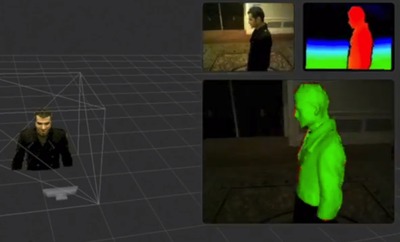 Readers may recall Skanect, a software tool that uses an inexpensive Microsoft Kinect to produce 3D scans of room-sized areas. Now creator Manctl has released a new version of Skanect that’s much more powerful.
Readers may recall Skanect, a software tool that uses an inexpensive Microsoft Kinect to produce 3D scans of room-sized areas. Now creator Manctl has released a new version of Skanect that’s much more powerful. The new version is capable of taking 3D scans of objects instead of rooms. They’ve re-engineered the program to include specialized modes for particular scanning scenarios:
- Body: This is the ideal setup to scan the bust of a person, with a bounding box of more of less 1x1x1m. You can increase the bounding box size to scan the whole body. It also performs well for mid-sized furniture.
- Object: This mode is best for smaller objects, with a default bounding box of 0.6×0.6×0.6m. It can capture finer details, at the risk of loosing camera tracking more easily.
- Room: This mode is designed to capture a 360º small room. The initial sensor position will be it the center of the bounding box.
- Half Room: This mode is better for scanning only a part of a room, with an initial sensor position near the back of the bounding box.
- Open Space: In this mode there is no predefined bounding box.
We’ll be testing the new version soon, but in the meantime you can try it out yourself by downloading it from their site. It’s offered in two packages:
- A free version for non-commercial use and has limited model resolution. You can only export to the Sculpteo 3D printing service.
- A paid €99 (USD$133) version with no restrictions on usage, resolution or export. And it includes support, too.
Professional scanning equipment typically costs several tens of thousands of dollars and is well beyond the means of hobbyists. However, by leveraging the Kinect that’s likely already in your home you can get yourself a fairly sophisticated 3D scanning capablility simply by using Manctl’s Skanect.
Via Manctl

